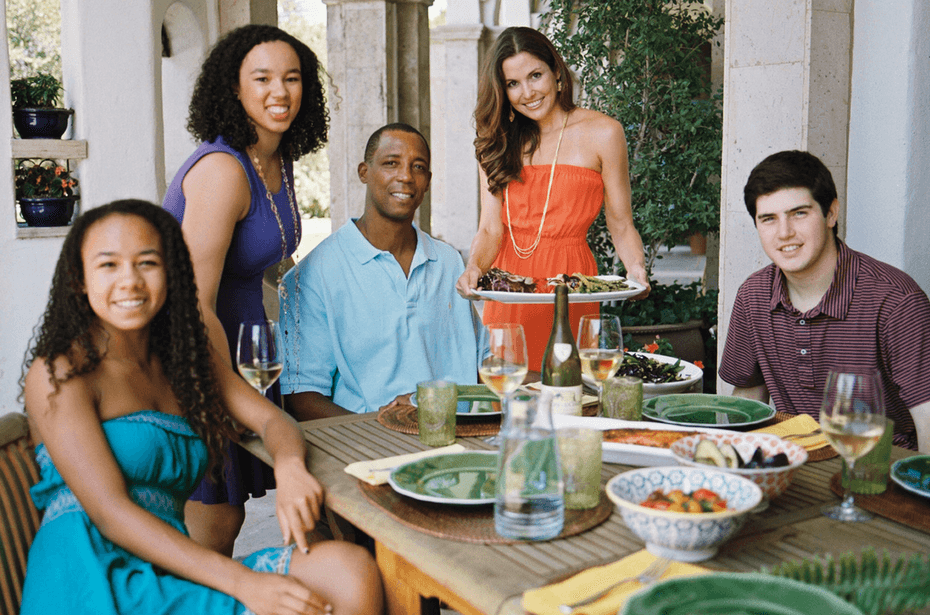
is a healthy foodie and fitness enthusiast who loves wine and chocolate and whines about push-ups.
Written By: Claudia Zapata, MS, RD
 When I was growing up, if my siblings or I didn’t like what was on the family dinner menu, we didn’t get the option of a peanut butter and jelly sandwich or a grilled cheese or chicken nuggets. Instead, we got a serving of my dad’s wisecrack, “this isn’t Wyatt’s.”
When I was growing up, if my siblings or I didn’t like what was on the family dinner menu, we didn’t get the option of a peanut butter and jelly sandwich or a grilled cheese or chicken nuggets. Instead, we got a serving of my dad’s wisecrack, “this isn’t Wyatt’s.”
Wyatt’s was a local cafeteria-style restaurant where your choices were many. The Zapata home was a place where your choices were what my mom had prepared or what my mom had prepared.
The “this isn’t Wyatt’s” remark doesn’t work with my kids (especially since the restaurant went under many years ago), but I have tried to employ the “what’s for dinner is what I prepare” strategy. It’s a feeding principle that has been best described by Ellyn Satter.
Satter, author of several must-read books on feeding children, including “How to Get Your Kid to Eat…But Not Too Much,”outlines a division of responsibility for both parents and children (toddlers through adolescents) that is basic and yet, profoundly powerful:
Parents decide the what, where and when of eating. Kids decide if and how much they’re going to eat.
So for instance, YOU decide you’re serving grilled chicken, brown rice and roasted vegetables at 6 p.m. at the dinner table. YOUR KID decides if and how much he’s going to eat.
No separate kid’s menu
No whining.
No begging or bartering.
No expectations beyond you providing the structure of mealtime and the opportunity for your kids to eat and enjoy healthy food.
The strategy allows for a much more enjoyable family dinner that teaches kids both flexibility and intuitive eating. It also allows you to introduce unfamiliar foods without making a big deal out of it, while giving kids a chance to learn to eat like mom or dad. And, if your kids don’t want what’s offered or want to eat just a few bites, don’t force them to try something or jump up to make the PB & J. Trust their instincts.
Of course, there’s nothing wrong with making their food fun. Also fun, getting them involved. Kids are much more apt to try a new food if they helped to prepare it.